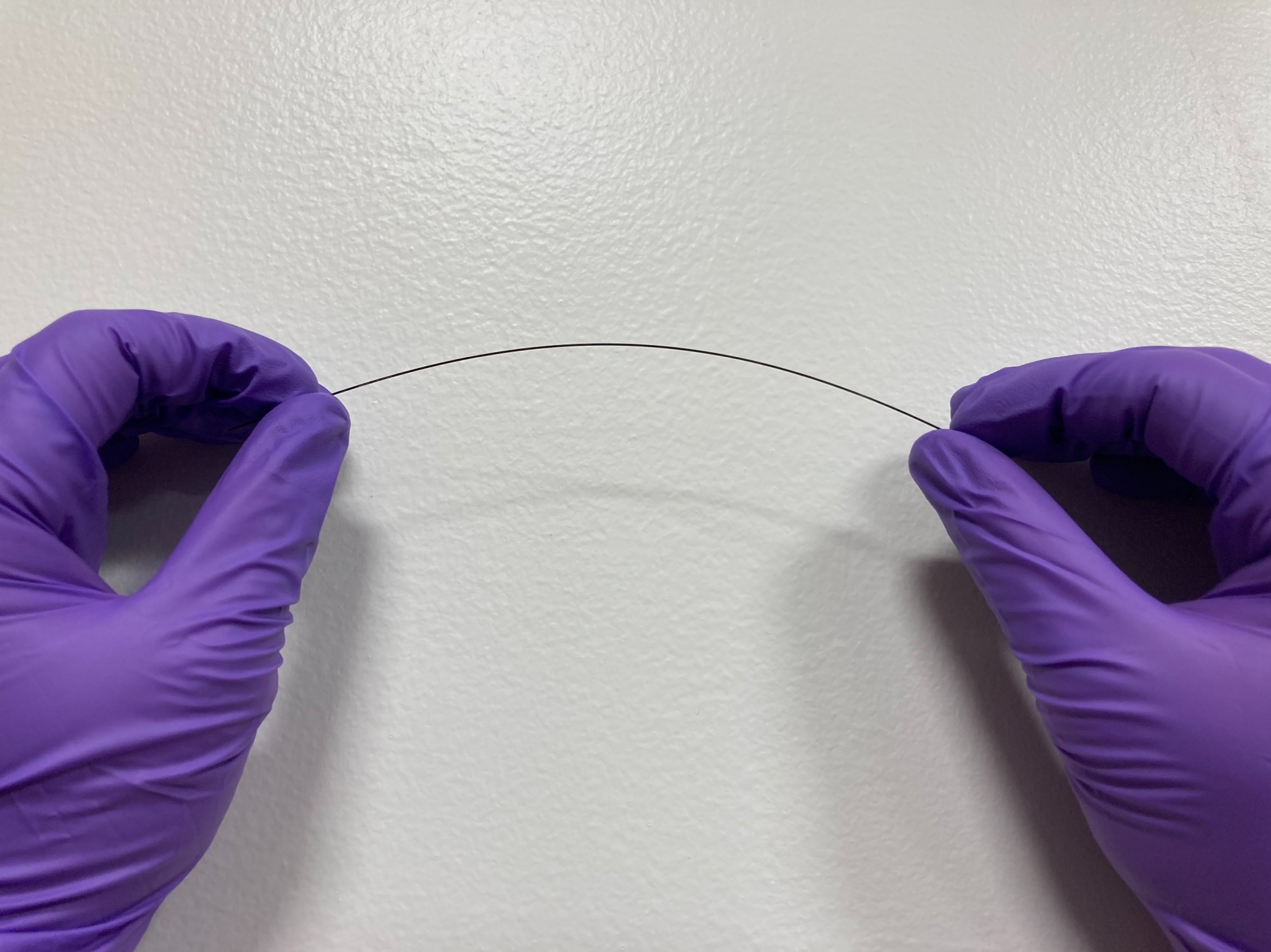Sep 22 2022Reviewed by Mila Perera
Researchers have developed a flexible, needle-like endoscopic imaging tool that can capture 3D microscopic images of tissue. The researchers’ newly created flexible graded index (GRIN) lens allows for bendability.
 Researchers have created a new long and flexible GRIN lens (pictured). They used it to create a bendable endoscopic imaging probe that can acquire 3D microscopic images. Image Credit: Guigen Liu, Harvard Medical School and Brigham and Women’s Hospital
Researchers have created a new long and flexible GRIN lens (pictured). They used it to create a bendable endoscopic imaging probe that can acquire 3D microscopic images. Image Credit: Guigen Liu, Harvard Medical School and Brigham and Women’s Hospital
Fluorescence microscopy techniques that can image deeply within tissues are frequently carried out using GRIN lenses, initially created for the telecommunications industry. Their application in medicine has been constrained, however, due to their rigidity.
When a traditional biopsy is performed, it represents a single moment in time and can take days to get results back from the laboratory. Our bendable imaging probes could shorten the waiting time to minutes and enable new approaches that use imaging to dynamically monitor tissue changes, for instance, how tumors react to treatments over time.
Guigen Liu, Research Lead, Harvard Medical School
The researchers describe their new GRIN lens, which they integrated into an endoscopic probe, in the Optica Publishing Group’s journal Optics Express. The imaging properties of the probe are still present when it is bent, according to experiments.
Liu added, “The bendable nature of these GRIN probes makes measurements in living subjects, such as animals or human patients, much more streamlined and practical. It could be useful for precise, minimally invasive microscopy-guided placement of needles and catheters for tissue biopsies and tumor ablation, for example.”
Imaging Through a Bent Lens
GRIN lenses are rods of silica glass with a constantly varying refractive index that concentrate light entering the rod without requiring an additional focusing lens.
Since their invention about 50 years ago, there has been a misconception that GRIN lenses can only be utilized as hard imaging probes.
In the latest study, the researchers countered this idea by attempting to capture images via a bent GRIN lens.
The researchers created a special 500-micron-diameter, 100 mm-long GRIN lens. The lens can bend roughly 10 ° without breaking due to its long, thin design and lack of a strong exterior shell.
The new GRIN lens was then added to an endoscopic imaging probe, where it was tested by two-photon 3D fluorescence imaging.
The lens was placed vertically and pushed to introduce the beam deflection that would be felt if the probe was employed in the working channel of a needle used for a biopsy, simulating the bending that would occur deep inside tissues.
The experiment demonstrated that when one end of the probe was shifted laterally by 6 mm, the resolution and signal intensity did not immediately degrade.
When the lens is bent, the signal lanes that carry the image through the rod synergistically adapt by laterally shifting, much like a car tends to shift toward the outside of a slippery curved road. While the signal lanes distort a bit while shifting, they largely keep their properties such as order and shape. This allows most of the resolution and signal level to be retained.
Guigen Liu, Research Lead, Harvard Medical School
A New Way to Screen Cancer Drugs
The endoscope is already used in biomedical research, but more studies and testing would be required before it could be used in clinical settings.
Oliver Jonas, a team leader and co-author, and colleagues are testing a technique for rapidly assessing the efficacy of various cancer therapies by combining the endoscope with a new type of microdevice.
The new microdevices created by the researchers are inserted into a tumor and can hold up to 20 drugs in minuscule quantities.
The researchers implanted a GRIN-based endoscope into the microdevice, where it can be used to image fluorescent signals inside the tumor to assess the efficacy of the various drugs without removing any tumor tissue.
Although this system is currently being tested on mice, it could ultimately be applied to humans to swiftly identify the most effective treatments for each patient’s unique tumor.
The researchers are also attempting to create longer bendable GRIN lenses to provide deeper imaging and more flexibility as they advance the probes toward clinical application.
They also intend to use a thin polymer coating that will not compromise flexibility to increase the mechanical toughness of the optical components.
Journal Reference
Liu, G., et al. (2022) Bendable long graded index lens microendoscopy. Optics Express. doi:10.1364/OE.468827.
Source: https://www.optica.org/en-us/home/